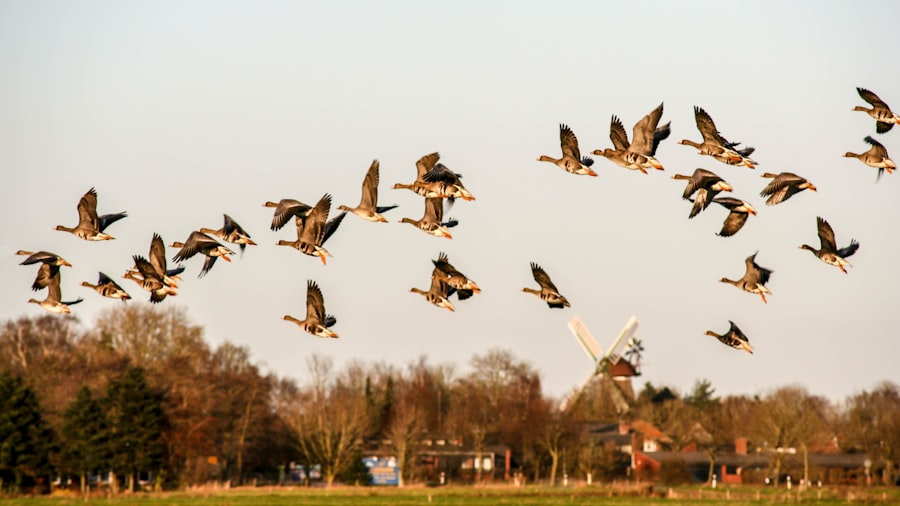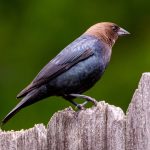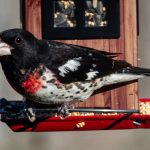Chickens and quails can be successfully kept together in a backyard farming setting. These two poultry species have distinct characteristics but can coexist peacefully when their needs are properly addressed. To ensure a harmonious environment, it is essential to understand the specific requirements of both chickens and quails in terms of housing, nutrition, and social behavior.
Creating a suitable living space is crucial for the well-being of both species. This includes providing adequate shelter, appropriate nesting areas, and secure enclosures to protect them from predators. Proper nutrition is also vital, as chickens and quails have different dietary needs that must be met to maintain their health and productivity.
Managing health and hygiene is another important aspect of keeping these birds together. Regular health checks, vaccinations, and maintaining clean living conditions help prevent the spread of diseases between the two species. Understanding the social dynamics between chickens and quails is necessary for a successful cohabitation.
While they can generally get along, it’s important to monitor their interactions and provide enough space to minimize potential conflicts. Despite the benefits of keeping chickens and quails together, there are challenges to consider. These may include differences in temperature preferences, feeding habits, and susceptibility to certain diseases.
By being aware of these factors and taking appropriate measures, poultry keepers can create a diverse and thriving backyard flock that includes both chickens and quails.
Table of Contents
- 1 Understanding the Differences Between Chickens and Quails
- 2 Creating a Suitable Living Environment for Chickens and Quails
- 3 Feeding and Nutrition for Chickens and Quails
- 4 Managing Health and Hygiene for Chickens and Quails
- 5 Social Dynamics and Interactions Between Chickens and Quails
- 6 Potential Challenges and Considerations for Keeping Chickens and Quails Together
- 7 FAQs
- 7.1 Can chickens and quails be kept together?
- 7.2 What are the considerations for keeping chickens and quails together?
- 7.3 Do chickens and quails require different diets?
- 7.4 Are there any health concerns when keeping chickens and quails together?
- 7.5 Can chickens and quails coexist peacefully?
- 7.6 What are the benefits of keeping chickens and quails together?
Key Takeaways
- Chickens and quails can be kept together, but it’s important to understand their differences and needs to ensure a harmonious living environment.
- Chickens and quails have different behaviors, dietary requirements, and social dynamics that need to be considered when keeping them together.
- Providing a suitable living environment for chickens and quails involves creating separate spaces for nesting, roosting, and dust bathing to accommodate their unique needs.
- Feeding and nutrition for chickens and quails should be tailored to their specific dietary requirements, with consideration for protein levels and access to grit for digestion.
- Managing the health and hygiene of chickens and quails involves regular monitoring, providing clean water, and ensuring proper ventilation to prevent disease and stress.
Understanding the Differences Between Chickens and Quails
Physical and Behavioral Differences
Chickens are larger birds with a more dominant and assertive nature, while quails are smaller and more timid. Chickens are known for their scratching and pecking behavior, while quails are more prone to hiding and seeking cover.
Environmental Considerations
Understanding these differences is crucial when creating a suitable living environment for both species.
Nutritional Requirements
Additionally, chickens and quails have different nutritional requirements, so it’s important to provide a balanced diet that meets the needs of both species.
Coexistence and Harmony
By recognizing and respecting the unique traits of chickens and quails, you can ensure a harmonious coexistence between the two species.
Creating a Suitable Living Environment for Chickens and Quails

When keeping chickens and quails together, it’s essential to provide a living environment that meets the needs of both species. The coop should have separate areas for nesting, roosting, and feeding to accommodate the different behaviors of chickens and quails. Additionally, the coop should have ample space to allow both species to move around comfortably.
Providing hiding spots and cover for quails is important to help them feel secure in the presence of more dominant chickens. The outdoor area should also be spacious and well-protected to allow both chickens and quails to forage and explore without feeling crowded or threatened. By creating a well-designed living environment, you can ensure that both chickens and quails have the space and resources they need to thrive.
Furthermore, it’s important to consider the climate and weather conditions when designing the living environment for chickens and quails. Both species are sensitive to extreme temperatures, so the coop should be well-insulated and ventilated to provide a comfortable environment year-round. Additionally, providing access to shade and water is crucial during hot weather to prevent heat stress.
In colder climates, adding heating elements or extra bedding can help keep both chickens and quails warm and comfortable. By considering the specific needs of each species and adapting the living environment accordingly, you can create a safe and comfortable space for chickens and quails to live together.
Feeding and Nutrition for Chickens and Quails
Proper nutrition is essential for the health and well-being of both chickens and quails. While both species require a balanced diet of grains, seeds, fruits, and vegetables, there are some differences in their nutritional needs. Chickens are omnivores and require a higher protein content in their diet, especially during molting or egg-laying periods.
Quails, on the other hand, are more insectivorous and require a higher protein intake to support their rapid growth and egg production. It’s important to provide separate feeding areas for chickens and quails to ensure that each species has access to the appropriate food without competition or aggression. In addition to their basic diet, providing access to grit and calcium supplements is important for both chickens and quails.
Grit helps birds grind their food in their gizzards, while calcium is essential for eggshell formation in laying hens. By understanding the specific nutritional needs of chickens and quails, you can ensure that both species receive the proper nutrients to support their growth, egg production, and overall health.
Managing Health and Hygiene for Chickens and Quails
Maintaining good health and hygiene practices is crucial when keeping chickens and quails together. Both species are susceptible to various diseases and parasites, so regular health checks and preventative measures are essential. Keeping the living environment clean and dry is important to prevent the buildup of bacteria and parasites that can affect the health of both chickens and quails.
Regularly cleaning the coop, replacing bedding, and providing dust baths can help control parasites such as mites and lice. Additionally, monitoring the overall health of both chickens and quails is important to identify any signs of illness or distress early on. Providing access to fresh water at all times is crucial for hydration and overall health.
It’s also important to quarantine any new birds before introducing them to an existing flock to prevent the spread of diseases. By implementing good health and hygiene practices, you can help prevent illness and maintain the well-being of both chickens and quails.

Establishing a Peaceful Coexistence
Chickens are known for their hierarchical structure with established pecking orders, while quails tend to form small groups with less dominant behavior. When introducing new birds or integrating different age groups, it’s essential to monitor their interactions closely to prevent aggression or bullying.
Reducing Competition and Stress
Providing multiple feeding areas, hiding spots, and perches can help reduce competition and stress between chickens and quails. It’s also important to consider the breeding behavior of both species when keeping them together. Male quails can be aggressive during mating season, so providing separate breeding areas or removing aggressive males can help maintain peace within the flock.
Creating a Well-Structured Environment
Additionally, providing enough space for both species to establish their territories can help reduce conflicts between chickens and quails. By understanding their social behaviors and providing a well-structured living environment, you can promote positive interactions between chickens and quails.
Potential Challenges and Considerations for Keeping Chickens and Quails Together
While keeping chickens and quails together can be a rewarding experience, there are some potential challenges and considerations to be aware of. One challenge is managing the different nutritional needs of both species, especially during breeding or egg-laying periods. Providing separate feeding areas or adjusting the diet accordingly can help meet the specific needs of chickens and quails without causing competition or deficiencies.
Another consideration is managing potential aggression or bullying between chickens and quails. Introducing new birds gradually, providing enough space, and monitoring their interactions closely can help prevent conflicts within the flock. Additionally, providing hiding spots or separate areas for more timid quails can help reduce stress in multi-species environments.
Furthermore, it’s important to consider local regulations or restrictions when keeping chickens and quails together. Some areas may have specific zoning laws or regulations regarding poultry farming that need to be followed. By being aware of potential challenges and considerations, you can proactively address them to create a successful multi-species poultry community.
In conclusion, keeping chickens and quails together requires careful consideration of their differences, as well as thoughtful planning in creating a suitable living environment, providing proper nutrition, managing health and hygiene, understanding social dynamics, and addressing potential challenges. With the right knowledge and preparation, you can create a thriving poultry community that includes both chickens and quails in your backyard. By promoting harmonious coexistence between these two species, you can enjoy the benefits of diverse poultry farming while providing a healthy and enriching environment for your birds.
If you’re considering keeping chickens and quails together, it’s important to provide them with the right environment and nutrition. One important aspect to consider is the type of coop you’ll need for both types of birds. This article on chicken coop designs offers valuable insights into creating a suitable living space for chickens and quails to coexist harmoniously. Additionally, it’s crucial to provide the right feed for both types of birds, and this article on what to feed ducks can offer helpful tips on providing a balanced diet for your feathered friends.
FAQs
Can chickens and quails be kept together?
Yes, chickens and quails can be kept together in the same coop or enclosure as long as certain considerations are taken into account.
What are the considerations for keeping chickens and quails together?
It is important to provide enough space for both chickens and quails to move around comfortably. Additionally, the coop should have separate areas for nesting and roosting to prevent any aggression between the two species.
Do chickens and quails require different diets?
Yes, chickens and quails have different dietary needs. It is important to provide separate feeders for each species to ensure they are getting the appropriate nutrition.
Are there any health concerns when keeping chickens and quails together?
There is a risk of disease transmission between chickens and quails, so it is important to monitor the health of both species and practice good hygiene and biosecurity measures.
Can chickens and quails coexist peacefully?
With proper management and supervision, chickens and quails can coexist peacefully. However, it is important to monitor their behavior and intervene if any aggression occurs.
What are the benefits of keeping chickens and quails together?
Keeping chickens and quails together can provide a diverse and interesting flock, as well as potentially increasing the overall productivity of the coop. Additionally, both species can help control pests in the area.
Meet Walter, the feathered-friend fanatic of Florida! Nestled in the sunshine state, Walter struts through life with his feathered companions, clucking his way to happiness. With a coop that’s fancier than a five-star hotel, he’s the Don Juan of the chicken world. When he’s not teaching his hens to do the cha-cha, you’ll find him in a heated debate with his prized rooster, Sir Clucks-a-Lot. Walter’s poultry passion is no yolk; he’s the sunny-side-up guy you never knew you needed in your flock of friends!







